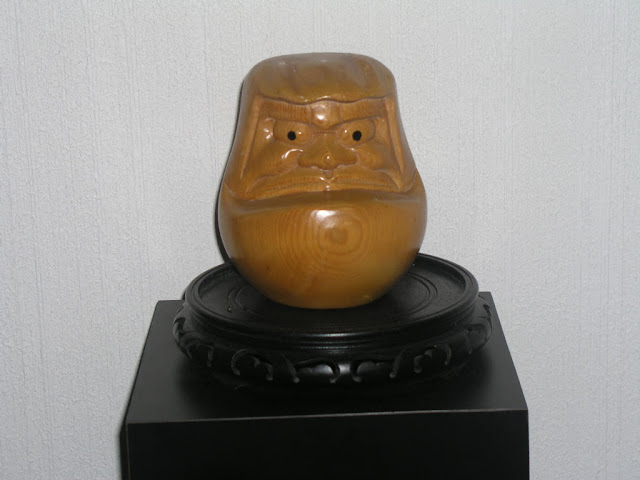Robashin, or "parental mind," is literally "the mind of an old woman" in Japanese. In the Tenzo Kyokun (Instructions for the Cook), Dogen mentions three minds: kishin (joyful mind), roshin (parental mind), and daishin (magnanimous mind). He said, “Roshin is the mind or attitude of a parent. In the same way that a parent cares for an only child, keep the Three Treasures in your mind.”
We should all develop roshin, not only for the three treasures (buddha, dharma, sangha) but for all sentient beings. Probably the non-sentient, too. Roshin evokes a response stronger than mere sympathy, producing something that we might come to all "empathy." The difference here is that while mere sympathy might cause us to regret the circumstances of others, empathy compels us to take action.
The word “empathy” is only a century old and derives from the German
einfühlung (“feeling into).” Writing in
The New Yorker, Paul Bloom notes that despite the recent coinage of the term, people have been interested in the moral implications of feeling the circumstances of others for a long time. In
The Theory of Moral Sentiments (1759), Adam Smith observed that sensory experience alone could not spur us toward empathetic engagement with others: “Though our brother is upon the rack, as long as we ourselves are at our ease, our senses will never inform us of what he suffers.” For Smith, what made us moral beings was the imaginative capacity to “place ourselves in his situation . . . and become in some measure the same person with him, and thence form some idea of his sensations, and even feel something which, though weaker in degree, is not altogether unlike them.”
In this sense, empathy is an instinctive mirroring of others’ experience. Neurological research has shown that some of the same neural systems ("mirror neurons") that are active when we are in pain become engaged when we observe the suffering of others.
So empathy is triggered not by sensory input, but by the creations and formations of the mind. We see the suffering of others, and then our mind creates a mental model of what that suffering may be like. Adam Smith noted how “persons of delicate fibres” who notice a beggar’s sores and ulcers “are apt to feel an itching or uneasy sensation in the correspondent part of their own bodies.” These mental models are what the Buddha called samskara, what linguists refer to as schema, and which has been discussed extensively in this blog.
Samskara, in the Buddha's Chain of Dependent Origination, is the substrate that gives rise to consciousness. Although it arises in the subconscious mind and we are not aware of their creation, consciousness arises once we engage those mental models. To the Buddha, consciousness arises whenever a sensation encounters a sense organ. For example, visual consciousness arises when a sight encounters the eyes, and aural consciousness arises when sound encounters the ear. Mental consciousness arises when a thought, especially one born from the subconscious, encounters the mind.
To take Adam Smith's example a step further, we see the afflictions of a beggar or the infirmed, our minds then create a mental model of what those afflictions must be like, and mind consciousness arises as we become aware of that thought. Concretely, our awareness of the mental model manifests itself as the itching or unease experienced by the observer.
This arising of consciousness as samskara bubbles up from our subconscious is a continuous process, and is what comprises that curious phenomenon of consciousness as "self awareness." It is nothing short of the cause of our total and complete conscious experience - our sensations, our memories, our thoughts, and our imagination. The process never stops, just as out own self awareness is always present. It must be exhausting, and it's little wonder that we periodically need to give it a rest and go to sleep, and let our minds drift off into unconsciousness.
Self-consciousness can give rise to egocentricity and all of the troubles and problems resulting from an egocentric attitude. But as noted in the opening, it can also give rise to empathy, and empathy can give rise to compassion, which is empathy put into action.
These of course are just my own philosophical noodlings, thoughts that have arisen in my mind during and following meditation. I would be interested in hearing what others have to say about these concepts.



















































